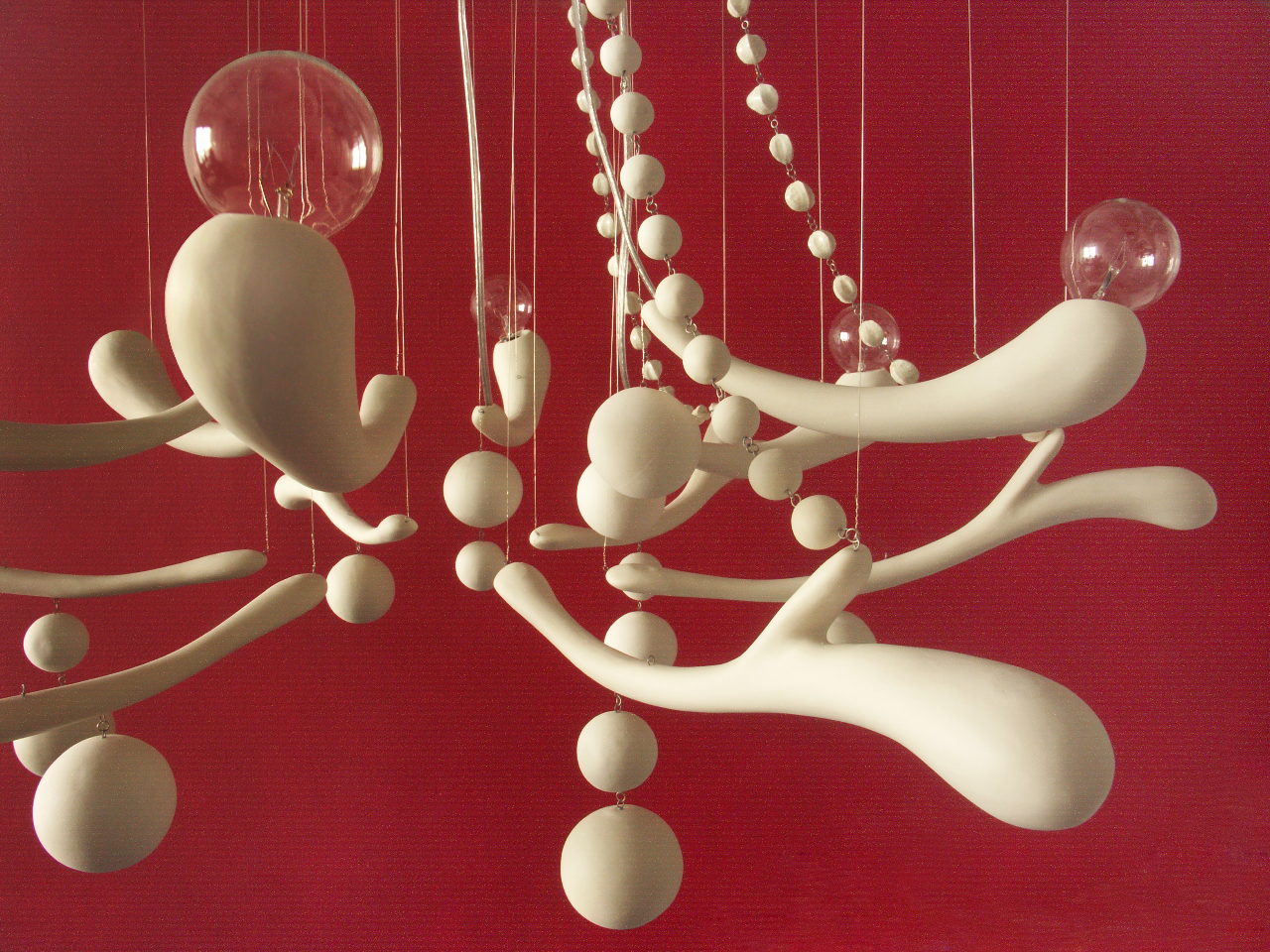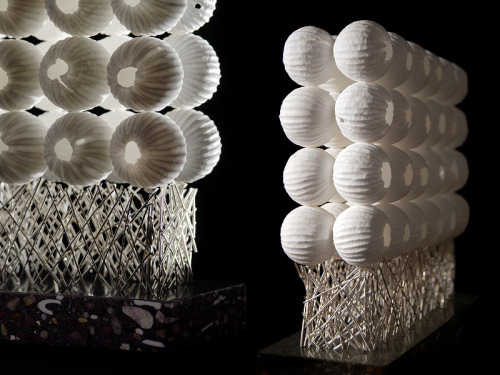Visit:
http://ifitshipitshere.blogspot.com/2009/09/ordinary-objects-become-art-when-slip.html

Shalene Valenzuela
AP 3D Breadth 3: Multiples and Modulars:
Objectives
Students will be able to…
understand and experiment with the elements and principles of "modularity, "repetition," and "rhythm" in the construction of three-dimensional form.
explore how sculptural form is often a matter of how "the whole is greater than the sum of the parts." To explore the pluses and minuses of "modularity" and "manufacturing." To consider the needs of the user.
introduce methods for creating identical parts from unique prototypes using such devices as molds, templates, and jigs. To explore different materials and methods for attaching and/or connecting multiple parts.
Multiples: wax or plaster poured into clay molds and then assembled into a formal
3-D design
Modular designs created by using paper tubes and other geometric forms.
Choose one or more Modular
development:
·
Five to seven large forms or 15 to 20
smaller forms assembled into a
formal 3-D designs emphasizing color and/or surface treatment.
·
Rhythmic
constructions using at least 100 pieces of the same small common object,
emphasizing horizontal or vertical movement
Describe the techniques used to create the sculptures and
explain how various aspects of the problem were addressed such as material choice,
the flexibility of the module, the method of creating multiples, etc
Reading: SS: 153-174
Resources:
Wharton
Esherick: http://www.levins.com/esherick.html
Dan
Flavin
http://www.diaart.org/sites/main/danflavinartinstitute
Visit this site for 3D Design mulitples examples
http://www.mercyhs.org/academics/teachers/gbennett/apstudioart3ddesign/ap_studio_art_Examples_for_Concentration_Idea_.htm
I continue to be drawn to sculpture, wall art, tiles and jewelry made with multiples. There is something about a repetitive form that feels familiar, soothing – almost meditative.

Movement Stack 1, earthenware, slipcast, 5″ x 7″ x 5″
Dryden Wells, who holds a BFA in ceramics and an MFA in ceramics and sculpture, uses multiples and fragments “to create objects that imply movement or the evidence of it.” Organic. Interesting. Cohesive.


Eva Zeisel, Belly Button Tiles

Jeanne Quinn, Everything Is Not As It Seems, detail, porcelain, wire, electric hardware, 2009.

Yeon joo Lee
Baggage of Life, each piece 14 in. (36 cm) in height, slip cast, electric fired to cone 6.


http://www.jaimetreadwell.com/multiples.htm GREAT BLOG!

Tara Donovan is a master of minutiae, a magician of the mundane. And if her
large Minimalist sculptures are any indication of her temperament, she is also
an ice princess and a bringer of light. Each of her installations engages with
space, architecture and light; and because she reinstalls, and often rescales,
the sculptures to fit each venue, she refers to her artworks as
"site-responsive." Ms. Donovan's sculptures are made from multiples of a single
mass-produced object or material -- hundreds of thousands (sometimes millions)
of pencils, twist ties, paper plates, drinking straws.

http://maliajensen.com/sculpture/sculpture_010.html


Chris Wight: Organic Modular Construction (detail)
No comments:
Post a Comment